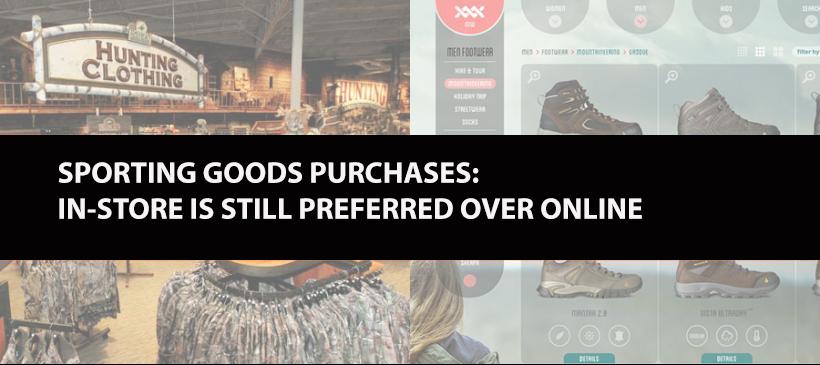Sporting Goods Purchases: In-Store is Still Preferred Over Online
- December 21, 2017
- By Randall Mueller
- Research

In a previous blog post, we began breaking down the results of an extensive study recently published by the National Association of Sporting Goods Retailers: “Shopper Playbook: Insights into the Sporting Goods Shopper.” Let’s continue analyzing a key portion of the study, which is the connection between buying decisions made at physical stores vs. online. Shopping in physical stores is still a favorite part of the purchase journey, even when shoppers included online visits as part of their buying research, according to the study.
Most notable is that nine out of 10 sporting goods shoppers visit a physical store prior to purchasing a product. Exactly one-half of purchases in the study group were made by shoppers who shopped in a physical store only. Another 38% of purchasers shopped both in a store and online, while 12% shopped online only.
Interestingly, the stats weren’t much different when looking specifically at millennial shopper behavior (defined as 18- to 34-year-olds in this report). Although millennials may do more online research prior to purchasing, 47% of them shop in-store only, 38% shop in-store and online, and 10% report shopping online only.
A key takeaway for retailers is related to a second set of results that focuses on buyers’ preferences, not only their actions. The study reveals that 66% of shoppers prefer to purchase in a physical store. Not surprisingly, this number is higher in footwear (76%) and apparel (70%) categories, than in equipment (64%). Taking a look at specific reasons buyers prefer one type of shopping over another is worthwhile for physical-store managers.


The study further offered examples of strengths and weaknesses of the in-store shopping experience.
Strengths:
- Ability to interact with the product
- Opportunity to get the product immediately
- Ability to obtain sales support, utilize expertise and ask questions
Obstacles:
- Products not being accessible (high shelving, blocked areas, etc.)
- Products out of stock
- Store associates not available or not knowledgeable
To maintain physical stores as the preferred shopping outlet, stores must find ways to “chip away at the strengths of alternative outlets (such as online),” the study concludes. One example given is to “extend the shelf” by integrating in-store and online shopping experiences, providing access to products that aren’t immediately available.
These are your customers, and they’re in your store to buy because of your strengths. Don’t create obstacles to closing the deal. Next time we look at this topic, we’ll look at how you can double down on your strengths by influencing shoppers during their store visit.
